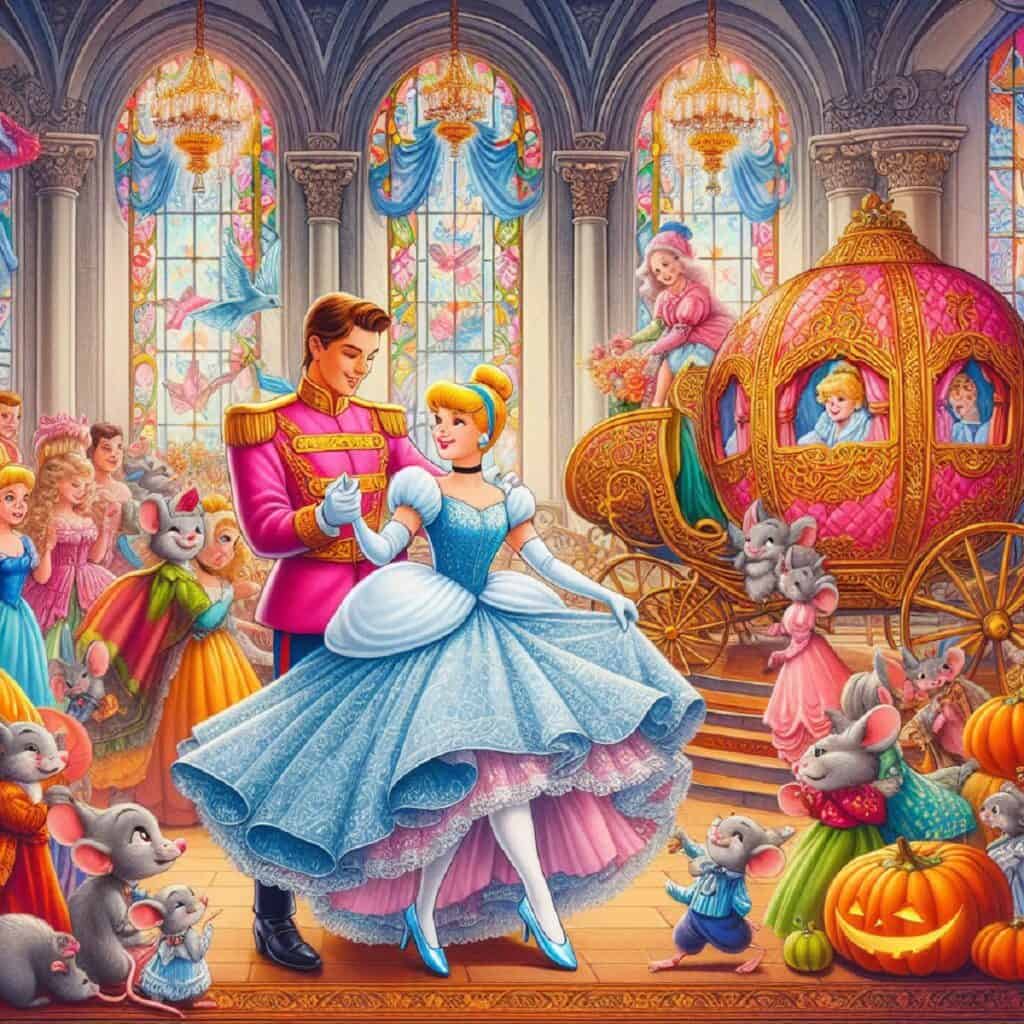Bedtime stories are like little drops of magic that sprinkle the night with wonder and imagination. They’re not just tales to whisk children off to sleep; they’re portals to new worlds, characters to befriend, and lessons to be learned. Crafting the perfect bedtime story for kids involves a delicate balance of whimsy, adventure, and warmth in a different way.
Perhaps the most magical aspect of bedtime stories is the bond they create between children and their caregivers. Snuggled up under the covers, sharing adventures through words, strengthens the parent-child connection and fosters a love of reading that lasts a lifetime.
So, as the stars twinkle outside and the moon casts its gentle glow, let bedtime stories weave their enchanting spell, transporting children to lands of dreams and imagination, where anything is possible.

- The Lion and the Mouse
- The Little Mermaid’s Tale
- Beauty and the Beast
- Goldilocks and the Three Bears
- Friendship’s Magic: The Princess and the Frog
- The tale of the Sleeping beauty
- Cinderella and the Enchanted Ball
- The Three Little Pigs
- The Ugly Duckling’s Journey of Transformation
- The Adventures of The Gingerbread Man
- Pinocchio’s Journey to Truth
- Little Red Riding Hood’s Adventure
- Jack and the Magical Beanstalk
- Rapunzel’s Adventure
- Snow White and the Seven Dwarfs
- Hansel and Gretel
Why read bedtime stories to kids?
Bedtime stories hold a special place in the hearts of children and parents alike. They offer more than just a pleasant way to end the day; they provide a nurturing environment for learning, bonding, and imagination. Here are some reasons to read bedtime stories to kids:
- Imagination Unleashed: Bedtime stories transport children to magical realms where anything is possible. Whether it’s an adventure in a faraway land, a journey through time, or an encounter with fantastical creatures, these stories ignite the imagination and encourage creative thinking.
- Comfort and Security: For many children, bedtime stories offer a sense of comfort and security. The soothing cadence of a parent’s voice and the familiar routine of storytelling create a safe and nurturing environment, helping children unwind and relax before sleep.
- Language Development: Bedtime stories play a vital role in language development. As children listen to stories, they are exposed to a rich vocabulary, sentence structure, and storytelling techniques. This exposure helps expand their language skills and fosters a love for reading and storytelling.
- Life Lessons: Many bedtime stories are imbued with valuable life lessons and moral teachings. Through the adventures of characters and the challenges they face, children learn about kindness, empathy, resilience, and the importance of making good choices.
- Bonding Time: Bedtime stories offer a precious opportunity for parents and children to bond. It’s a time for snuggles, shared laughter, and moments of connection. By engaging in storytelling together, parents and children strengthen their relationship and create lasting memories.
- Cultural and Social Awareness: Bedtime stories often reflect diverse cultures, traditions, and experiences. Through these stories, children gain exposure to different perspectives, customs, and ways of life, promoting cultural understanding and social awareness.
- Encouragement for Reading: Introducing children to bedtime stories sets the stage for a lifelong love of reading. As children grow older, they may transition from being listeners to becoming readers themselves, eager to explore the vast world of books and stories on their own.
- Personalized Tales: Bedtime stories can be personalized to suit the interests and preferences of individual children. Whether it’s a story starring the child as the hero or a tale featuring their favorite characters, personalized stories add an extra layer of magic and delight to bedtime.
In essence, bedtime stories are more than just a prelude to sleep; they are a cherished tradition that nurtures the heart, mind, and soul of a child, fostering imagination, learning, and love.
Types of bedtime stories for kids
Bedtime stories for kids come in a variety of types, each offering its own unique charm and appeal. Here are some common types of bedtime stories:
- Fairy Tales: Fairy tales are timeless classics that feature magical elements, enchanting settings, and memorable characters. These stories often involve themes of good versus evil, bravery, and happily ever afters.
- Adventure Stories: Adventure stories are filled with excitement, suspense, and daring escapades. These tales take readers on thrilling journeys to faraway lands, hidden treasures, and mysterious worlds.
- Bedtime Rhymes and Lullabies: Bedtime rhymes and lullabies are soothing and rhythmic stories designed to help children relax and drift off to sleep. These gentle tales often feature repetitive language, melodic cadences, and comforting imagery.
- Fantasy Stories: Fantasy stories transport readers to magical realms filled with wizards, dragons, unicorns, and other mythical creatures. These imaginative tales spark the imagination and encourage children to dream big.
- Moral and Fable Stories: Moral and fable stories teach valuable life lessons through the experiences of characters and the consequences of their actions.
- Personalized Stories: Personalized stories are custom-made tales that incorporate elements specific to a child’s life, such as their name, interests, and experiences. These stories add a personal touch and make bedtime storytelling even more engaging and meaningful.
- Educational Stories: Educational stories combine entertainment with learning, introducing children to concepts such as numbers, letters, colors, and shapes in a fun and engaging way. These stories can help reinforce early literacy skills and cognitive development.
These are just a few examples of the diverse types of bedtime stories available for children. Regardless of the type, the most important aspect of bedtime storytelling is the joy, connection, and sense of wonder it brings to both children and parents alike.
How to choose the right bedtime story for kids?
Choosing the right bedtime story for your child can make the bedtime routine more enjoyable and meaningful. Here are some tips to help you select the perfect bedtime story:
- Consider Your Child’s Interests: Take into account your child’s age, preferences, and interests when selecting a bedtime story. Choose stories featuring topics, characters, or themes that resonate with them. For example, if your child loves animals, opt for an animal-themed story.
- Match the Mood: Pay attention to your child’s mood and energy level before bedtime. Select a story that matches the mood you want to create. For instance, choose a soothing and calming story for winding down, or a playful and humorous story for a bit of lighthearted fun.
- Choose a Length Appropriate for Bedtime: Consider the length of the story and your child’s attention span. For younger children or those who are particularly tired, shorter stories or picture books with minimal text may be more suitable. Older children may enjoy longer stories or chapter books that can be read over multiple nights.
- Incorporate Educational Content: Bedtime stories can also be an opportunity to incorporate educational content. Choose stories that introduce new concepts, teach valuable life lessons, or reinforce learning in areas such as literacy, numeracy, or social-emotional development.
- Rotate Favorites with New Stories: Balance familiar favorites with new stories to keep bedtime reading fresh and exciting. While your child may have a beloved bedtime story they request frequently, introducing new stories allows for variety and exploration.
- Consider the Message or Theme: Think about the message or theme of the story and how it aligns with your family values or any specific lessons you want to reinforce. Bedtime stories with positive messages of kindness, courage, empathy, and friendship can be especially meaningful.
- Engage Your Child in the Selection Process: Involve your child in choosing the bedtime story whenever possible. Offer them a selection of books to choose from or ask them about their preferences. Empowering your child to be part of the decision-making process can foster excitement and engagement.
- Personalize the Storytelling Experience: Consider personalizing the storytelling experience by incorporating your child’s name or adapting the story to include familiar places or experiences. This can make the bedtime story feel more special and tailored to your child’s individuality.
Ultimately, the right bedtime story is one that creates a warm and loving atmosphere, fosters connection between you and your child, and leaves them feeling comforted and content as they drift off to sleep.
















